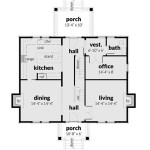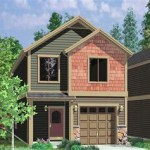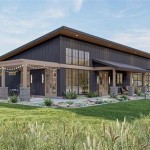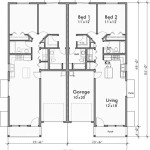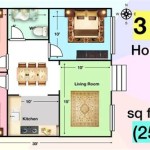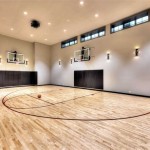25 Foot Wide House Plans: Design Considerations and Benefits
Designing a house with a 25-foot width presents unique challenges and opportunities. This dimension necessitates careful planning to maximize space and functionality, particularly when considering room layouts, natural light, and access. Understanding the key factors involved in 25-foot wide house plans is crucial for creating a comfortable and efficient living environment.
This article will explore the various aspects of designing a house within this specific width constraint. It will delve into the potential benefits of such a design, the common challenges architects and homeowners face, and the strategies employed to overcome these limitations. Key considerations will include floor plan optimization, natural light penetration, structural support, and interior design choices that enhance the feeling of spaciousness.
The focus will remain on providing informative insights into the planning and execution of 25-foot wide house plans, offering a comprehensive overview for those considering or currently involved in such a project. This includes understanding the regulatory compliance aspects, material selection considerations, and the potential for energy efficiency within this footprint.
Maximizing Space and Functionality in a Narrow Footprint
The primary challenge in designing a 25-foot wide house is maximizing the use of limited horizontal space. Clever architectural strategies are essential to prevent the house from feeling cramped or confined. Open-concept layouts are a common solution, eliminating unnecessary walls and creating a more flowing and interconnected living area. This approach typically involves combining the kitchen, dining, and living rooms into a single, larger space.
Vertical space becomes equally important. Utilizing high ceilings can create a sense of airiness and allow for taller windows, which contribute to better natural light penetration. Strategic placement of staircases is also critical; compact designs, such as spiral staircases or those integrated into the wall, can save valuable floor space.
Storage solutions should be carefully considered. Built-in cabinets, shelving, and under-stair storage can maximize every available inch. Multi-functional furniture, such as sofa beds or storage ottomans, can further enhance space efficiency, providing flexibility for different needs without sacrificing living space.
The placement of bathrooms and utility rooms requires careful thought. Stacking these rooms vertically, where possible, can minimize the footprint on each floor. Efficient plumbing layouts can also contribute to space savings. The goal is to create a functional and comfortable living environment without compromising on essential amenities, all within the constraints of a narrow width.
Outdoor spaces, such as balconies or small gardens, can also extend the living area and provide a sense of openness. Integrating these areas into the overall design can blur the lines between indoor and outdoor living, making the house feel larger than it actually is. Landscaping considerations, such as vertical gardens, can further enhance the feeling of spaciousness and create a more inviting atmosphere.
Optimizing Natural Light and Ventilation
Natural light is crucial in any home, but it's especially important in a 25-foot wide house, where maximizing light penetration can significantly impact the perceived size and comfort of the interior. Large windows, skylights, and light wells can effectively bring sunlight into the house, reducing the need for artificial lighting during the day.
The orientation of the house relative to the sun's path is a key consideration. Positioning the main living areas to face south or west can maximize solar gain, providing warmth in the winter and ample daylight throughout the year. Overhangs and shading devices can be used to control solar gain in the summer, preventing overheating and reducing cooling costs.
Interior design choices can also impact the distribution of natural light. Light-colored walls and ceilings reflect light more effectively, brightening the interior. Mirrors strategically placed can further enhance the reflection of light and create a sense of spaciousness. Open floor plans allow light to travel more freely throughout the house.
Ventilation is equally important for maintaining a comfortable indoor environment. Cross-ventilation, achieved by placing windows on opposite sides of the house, can create a natural airflow that reduces the need for air conditioning. Operable skylights can also provide ventilation, allowing warm air to escape from the top of the house.
Passive solar design principles can be incorporated to optimize both natural light and ventilation. This involves carefully considering the orientation of the house, the placement of windows and doors, and the use of shading devices to create a comfortable and energy-efficient living environment.
Structural Considerations and Material Selection
The structural design of a 25-foot wide house requires careful attention to ensure stability and safety. The limited width can present challenges for load-bearing walls and roof support. Architects and engineers must work together to develop a structural system that effectively distributes weight and resists wind and seismic forces.
The choice of materials plays a crucial role in the structural integrity and overall aesthetic of the house. Lightweight materials, such as engineered wood products and steel framing, can reduce the load on the foundation and minimize the need for bulky structural supports. Sustainable materials, such as recycled wood or bamboo, can also be incorporated to reduce the environmental impact of the construction.
The foundation design must be carefully considered, taking into account the soil conditions and the weight of the house. Options include slab-on-grade foundations, crawl spaces, and basements. A well-designed foundation is essential for preventing settlement and ensuring the long-term stability of the structure.
The roof design must also be carefully considered, particularly in areas with heavy snow loads or high winds. Gable roofs, hip roofs, and flat roofs are all potential options, each with its own advantages and disadvantages. The choice of roofing materials, such as asphalt shingles, metal roofing, or tile, will also impact the structural integrity and longevity of the roof.
Building codes and regulations must be strictly followed to ensure the safety and structural integrity of the house. This includes obtaining the necessary permits and inspections, and adhering to all applicable zoning ordinances and building standards. Consulting with experienced architects and engineers is essential for navigating the complex regulatory landscape and ensuring a successful project.
Energy efficiency is another critical consideration when selecting materials. Insulating materials, such as fiberglass, cellulose, or spray foam, can significantly reduce energy consumption and improve the comfort of the house. High-performance windows and doors can also minimize heat loss and gain, further reducing energy costs.
Sound insulation should also be considered, especially in urban environments. Soundproofing materials, such as dense insulation, resilient channels, and soundproof windows, can help to reduce noise transmission from outside and between rooms, creating a more peaceful and comfortable living environment. The selection of materials for floors, walls, and ceilings can also impact the acoustics of the house.
The exterior cladding of the house should be both aesthetically pleasing and durable, providing protection from the elements and enhancing the overall appearance of the structure. Options include brick, stone, siding, stucco, and wood. The choice of cladding should be based on the local climate, the architectural style of the house, and the budget of the project.
Interior finishes, such as flooring, wall coverings, and trim, can also impact the perceived size and comfort of the house. Light-colored finishes can make the interior feel brighter and more spacious, while darker finishes can create a more intimate and cozy atmosphere. The selection of finishes should be based on personal preferences and the overall design aesthetic of the house.
Proper maintenance and upkeep are essential for preserving the structural integrity and aesthetic appeal of the house. Regular inspections and repairs can prevent minor problems from escalating into major issues. This includes checking for leaks, cracks, and other signs of damage, and addressing them promptly. Following a regular maintenance schedule can help to extend the lifespan of the house and maintain its value.

25 Wide Cottage With 3 Bedrooms And A Rear Access Garage 521009ttl Architectural Designs House Plans

25 Foot Wide 3 Bed Transitional House Plan 300021fnk Architectural Designs Plans

Pin By Jenn Keifer On House Designs Craftsman Style Plans Narrow Lot

25 Foot Wide 3 Bed Transitional House Plan 300021fnk Architectural Designs Plans

Pin By Jenn Keifer On House Designs Craftsman Style Plans Narrow Lot

25 Wide Duplex House Plan 3 Bedrooms 2 Bathrooms With Garage Plans Floor

25 Foot Wide Modern Contemporary 3 Story Home Plan Scenic Overlook 680034vr Architectural Designs House Plans

Gmfplus Architects Redevelopment Urban Plans Library The Loraine Victorian House Plan Study Starting At 99

25 Foot Wide Two Story House Plan Under 2000 Square Feet With 3 Bedrooms 69815am Architectural Designs Plans

Pin By Jenn Keifer On House Designs Craftsman Style Plans Narrow Lot

